by Sandra Hutchinson
We managed a quick trip (8 nights) to Portugal over the recent New Year’s holiday, with our family of six: my husband and me, our two adult sons, and their girlfriends. We flew from Newark to Lisbon, then a quick one-hour flight north to Porto. After four nights in Porto, we took the train to Lisbon, and stayed an additional four nights. Our time in Lisbon included a day trip to Sintra.

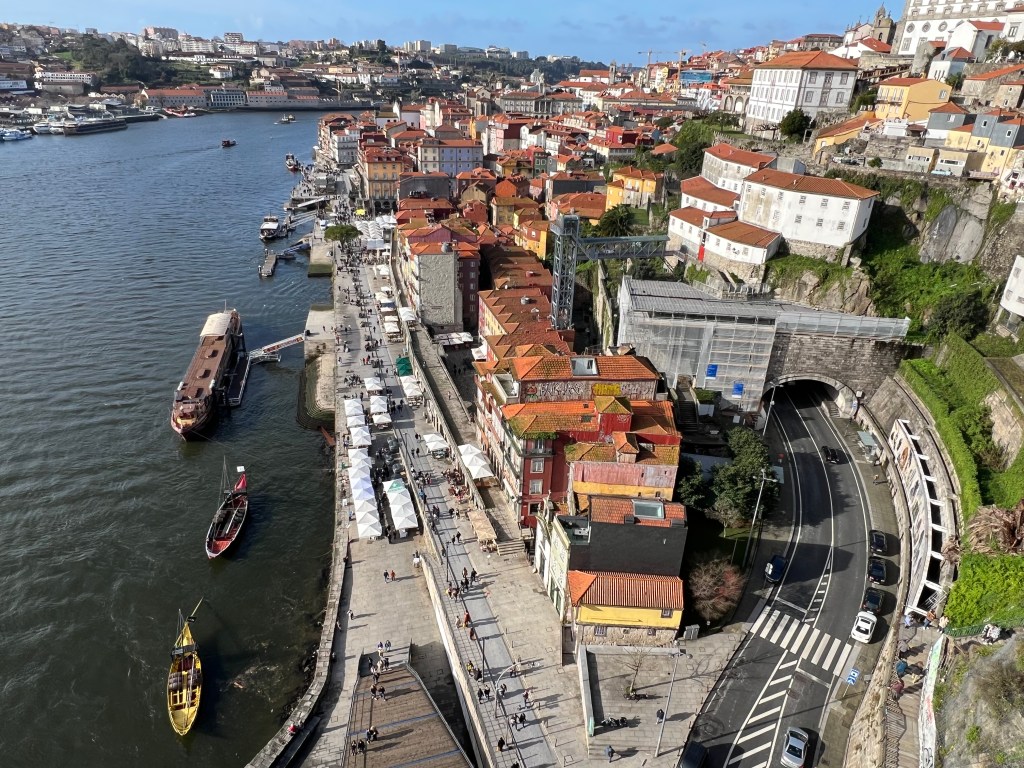
Porto is the second largest city in Portugal. It’s located on the Douro River, and is notable for its jumble of red-roofed buildings that extend up the steep slope on one side of the river; the extensive use of hand painted ceramic tiles, or azulejos, in churches and public buildings; and a famous double-deck iron bridge that connects the Porto side of the river with Vila Nova de Gaia on the other, where multiple, huge port wine warehouses are located.
The photo above was taken from the Dom Luis I bridge, completed in 1886, looking down at the Ribeira neighborhood of Porto . At the time of its construction, the 564 foot span was the longest of its type in the world. The construction was overseen by a student of Gustave Eiffel. The photo below is looking at the bridge from Gaia.

Pedestrians can walk across the bridge on either the lower or upper level. The light rail runs across the top deck. On both sides the visitor will find a lot of activity — even in January, bustling cafes with outdoor tables, many with heat lamps, artisans selling crafts along the waterfront, and outdoor sculptures. The weather was fairly mild at the end of December/beginning of January — usually mid to upper-fifties (F) during the day. We only had one day with appreciable rain.
There’s also a gondola that takes passengers between lower Gaia to the top of the hill, near where the top level of the bridge connects. We took the gondola from the upper level to the waterfront. It was a bit pricey but fun, although it’s a pretty quick ride up or down. Great views. In the photo below of the Calem port warehouse, you can see the gondolas above.


We stayed on the Porto side of the river, at Condes de Azevedo Palace, which is particularly well located. Housed in what was a 17th century palace, accommodations are all apartments, with kitchens and living rooms. We had a one bedroom, for my husband and me, and a two bedroom for our sons and their girlfriends. The desk staff, Duarte and Marisa, in particular, were incredibly warm and helpful. The photos below are of the living rooms — the larger two-bedroom apartment is on the left. The apartments were large and comfortable and suited our needs well.

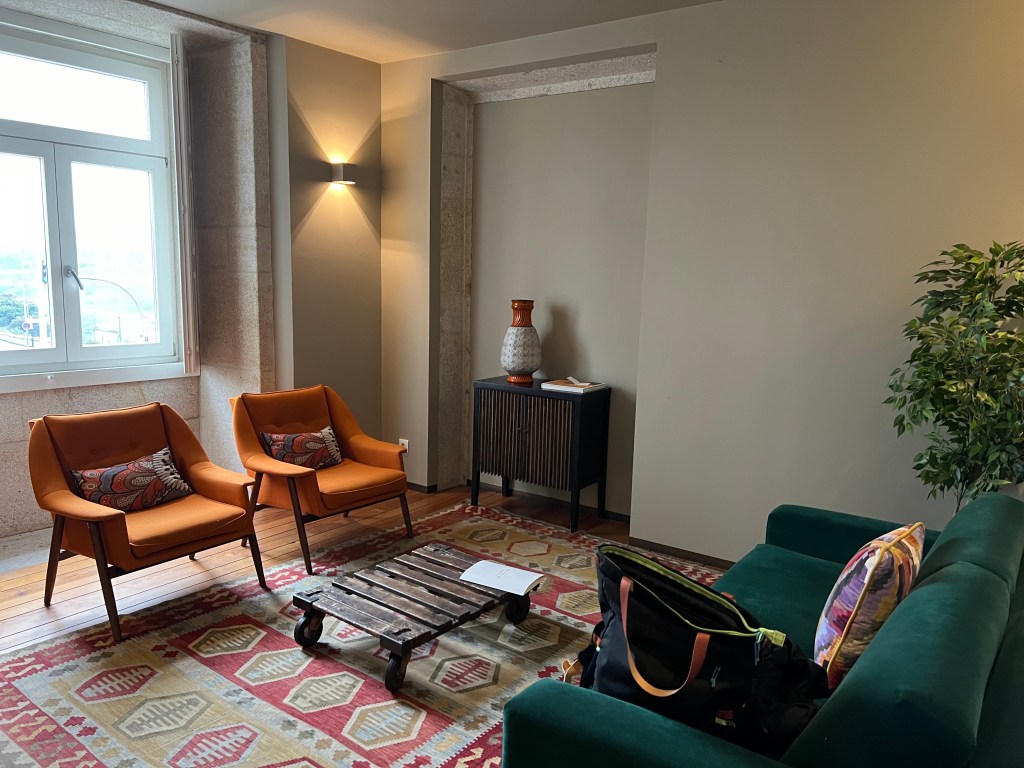
Highlights of our visit to Porto included visiting what is often called “the most beautiful bookstore in the world,” or, the Livraria Lello. Opened in 1908, the bookstore became famous after J. K. Rowling said she was inspired to create Harry Potter after spending time in the bookstore while living in Porto in the early 1990s. Because of the popularity of the store, timed tickets must be purchased online ahead of time. Link here. It is truly a magical space, and the centerpiece is a curving, precipitous staircase. Hopefully these photos, below, don’t give you vertigo! One is looking up the staircase, and the other, looking down.

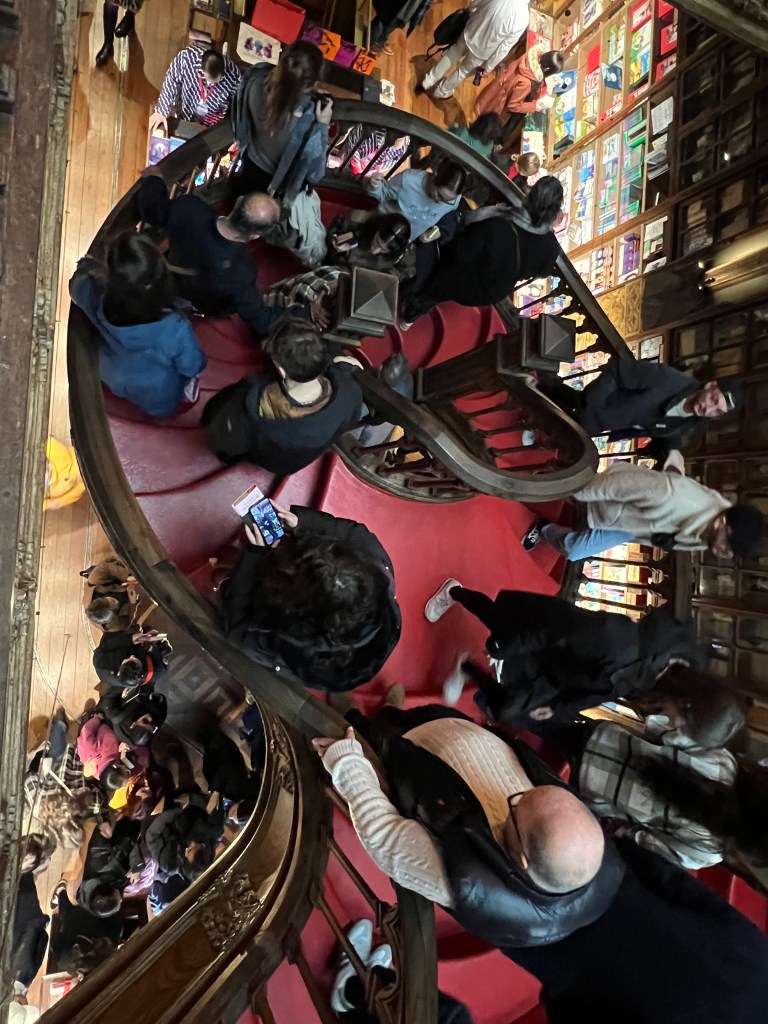
I loved several things about the bookstore. First, the staff was very friendly, answering my questions with no apparent irritation or discomfort posed by the huge number of visitors. Second, the bookstore has its own imprint, and republishes classics in small, beautifully printed books. I picked up a charming “little collection” copy of Beatrix Potter works, complete with illustrations. If you purchase an item published by the store’s imprint, you can apply your ticket value (ours were 8 euros each) towards the cost of the item.
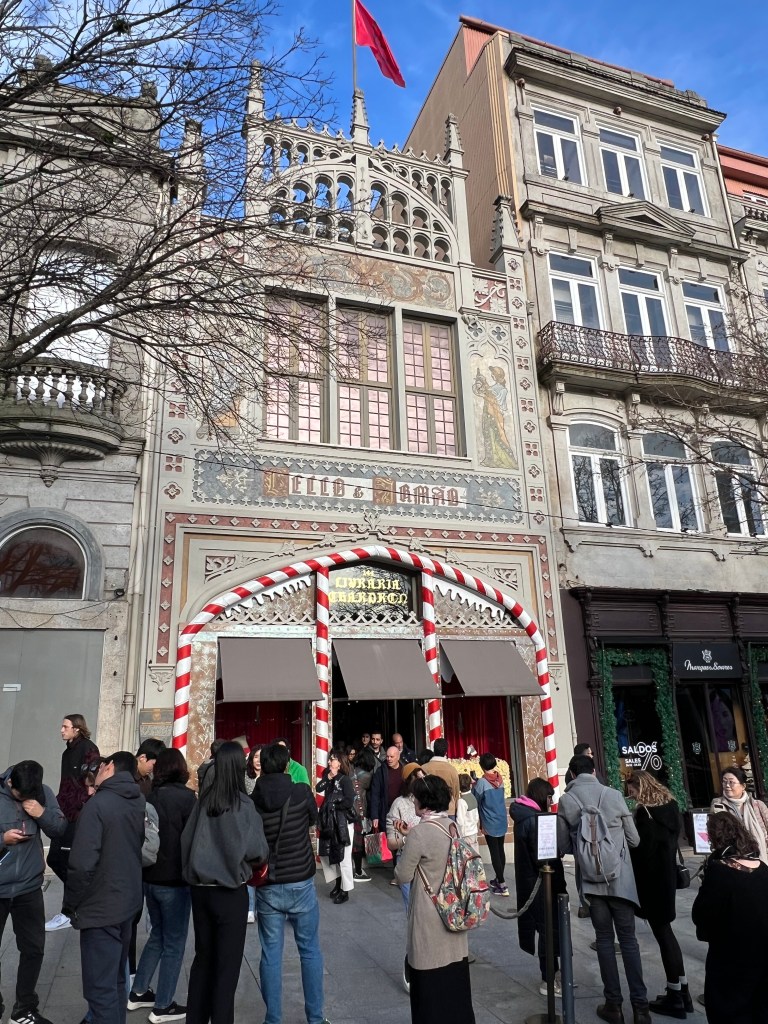

At the rear of the store was an interesting exhibit featuring the bookstore’s reprint of the original version of Le Petit Prince by Antoine de Saint-Exupery, and in a display case was an ID bracelet belonging to the author, that had been found by a French fisherman in 1998, in the Mediterranean off Marseille, where the author perished in a plane crash in 1944. It gave me shivers up my spine.

You can’t go to Porto and not be wowed by the churches, especially those that are decorated with the largely blue and white hand-painted tiles, called azulejos. These tiles have their origin from the time the Moors occupied the country, after they invaded in the 8th century.

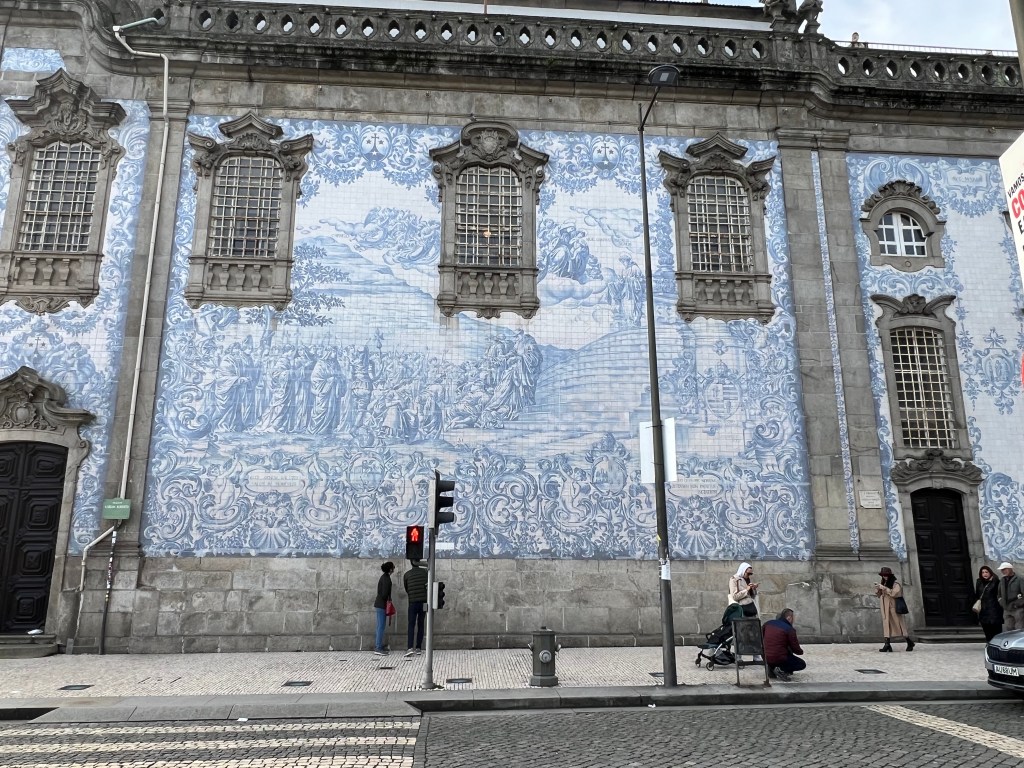

The Porto Cathedral features beautiful azulejos around the perimeter of its interior cloister, as well as on the roof. Make sure to take the steep stairs to the roof for the view!

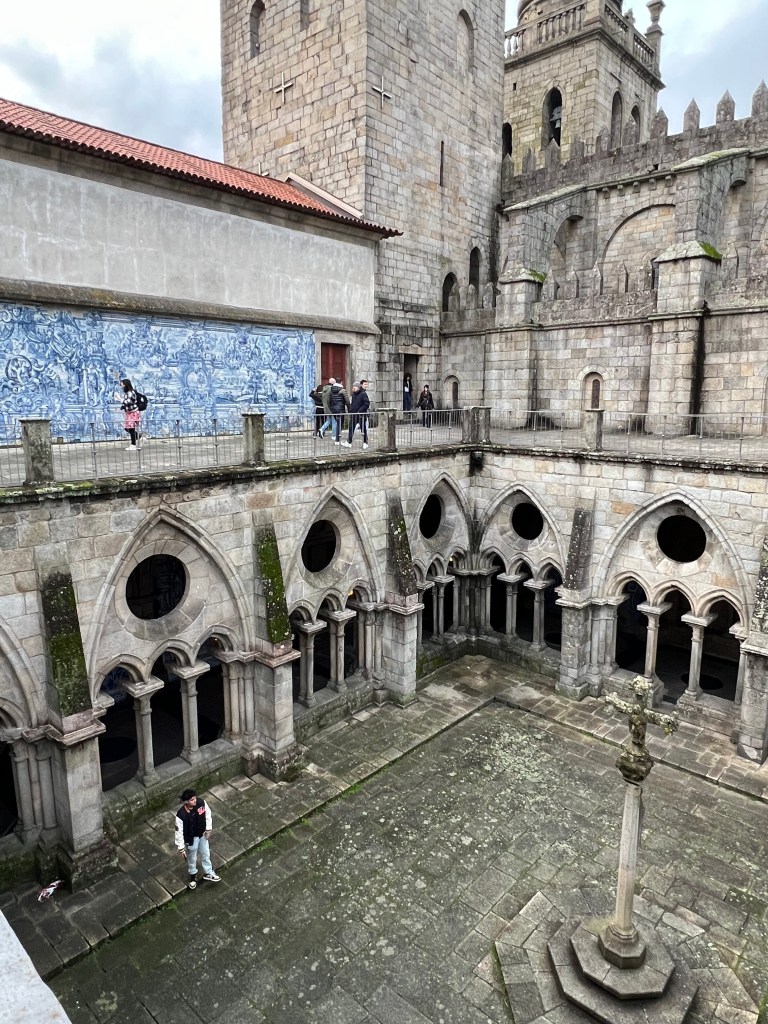

One of the most famous sites to see azulejos in a public building is the Sao Bento train station. I particularly loved the tiles that show every day life, like farming and harvesting grapes. The large murals on either end of the station show a royal wedding on one side, and a battle on the other.





If you are considering spending New Year’s Eve in Porto, be aware that most restaurants have a set price menu that can be quite expensive. In my research leading up to our trip, I found many restaurants that were only serving a set menu of up to 190 euros each person for New Year’s Eve. With our group of six, that seemed like a price tag we weren’t willing to accept. With the advice of the desk staff at the Condes de Azevedos, weeks before our arrival, I made reservations at Culto do Bacalhau, on the top floor of the Bolhao Market, where we could order off the regular menu.
The focus of the restaurant, which is fairly newly opened, is codfish, described by the restaurant as “an icon” of Portuguese cuisine. Bacalhau, or salted, dried codfish, has been part of Portuguese cuisine for centuries, even though it is not necessarily caught locally. Portuguese fleets sailing hundreds of years ago needed a way to preserve the cod they caught in the north Atlantic, so it was pickled in salt. Once back in Lisbon, is was dried. It is reconstituted with water to create all variety of dishes.
All I can say about our four-hour plus dinner at the Culto do Bacalhau was that it was quite the culinary experience. Many dishes feature bacalhau, and not all appealed to me, but the atmosphere and the engaging wait staff made for a memorable evening. The ingredients and preparation of nearly every item on the menu was described in detail by the wait staff. Here are some photos, below. In the group photo, the young man standing to my right at the head of the table is our principal server.





The trio of small dishes shown above were a starter, representing tastings from the south, middle and north of Portugal. We had multiple bottles of Portuguese wine, many with the name of the restaurant on the label. The fluffy item in one photo is actually a dessert, made with salted cod with ice cream on top. Believe it or not, everyone loved it. Both salty and sweet.


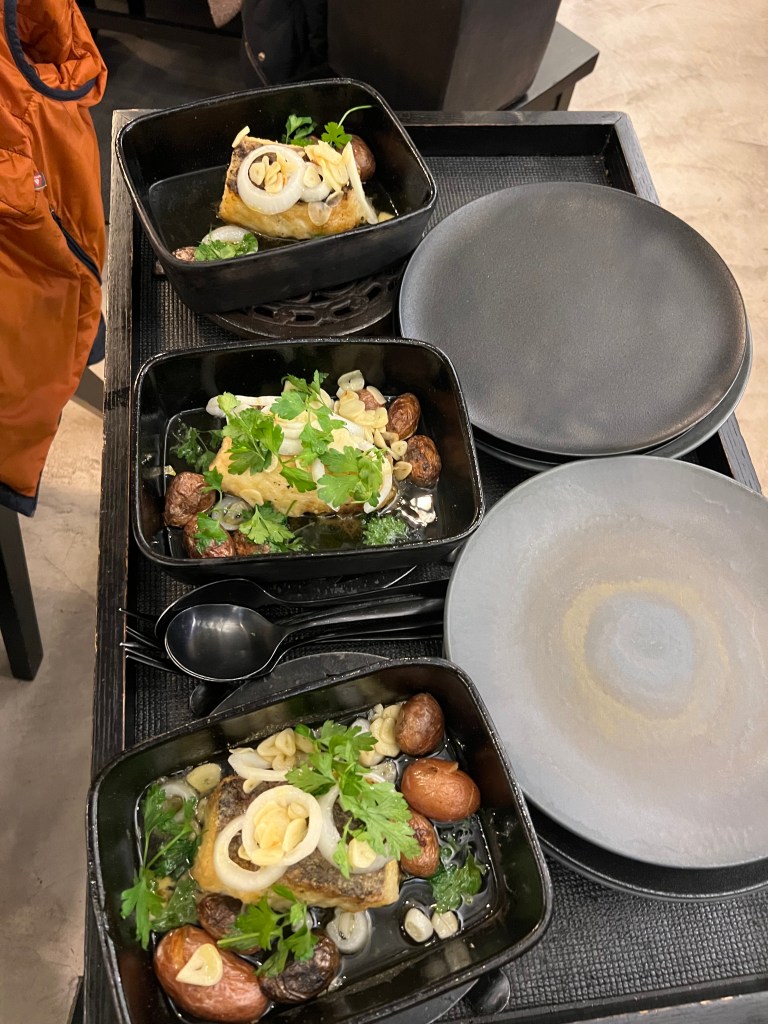
We finished the meal with a bottle of something that I assumed was a young port, the golden wine in the bottle, above.
If you’re interested in the Culto do Bacalhau, I recommend checking the website by clicking here, and reviewing menus under “a la carte.”
After we left the restaurant, past 11 pm, we headed up to the area in front of Porto City Hall for a giant street party, where we counted down to midnight among a huge crowd. We were hoping to see fireworks, but as it turned out, the fireworks were being shot off somewhere behind City Hall and we could only see the reflections of the bursts in some windows!

While in Porto it is impossible to not become aware of the famous Portuguese custard pastry called pastel de nata. It’s a custard tart, with egg custard baked in a layered, flaky crust. They’re relatively small, baked in pans that resemble muffin pans. Typically there’s a sprinkling of cinnamon on top.

These pastries are said to have originated at the Jeronimos Monastery in the Belem neighborhood of Lisbon. (More on that in Part 2 of my Portugal posts!) Monks used egg whites in their laundry process, and supposedly found a way to use the leftover yolks by creating these custard tarts. There are a number of bakeries throughout Porto where you can watch the tarts being made, with the pastry dough for each tart individually hand-pressed in to the baking cup. We sampled the tarts at a number of venues, and the consensus was that our favorites were from the Castro Bakery.
Below is a photo of pasteis de nata being made at Castro, along with a takeaway box!


One huge tourist draw we went to was a bit of a disappointment — the Majestic Cafe, on one of the main commercial streets in Porto, Rue Santa Catarina. There is typically a long queue to enter, and while the Belle Epoque interior is interesting, I found the food to be overpriced and not particularly good, and the service mediocre. One of our party ordered the classic Portuguese sandwich called a Francesinha, which is a heavy dish made with layers of bread and assorted meats, sliced cheese and a sauce. Not particularly appealing, at least to me.




One church we visited flies a bit under the radar but is absolutely worth seeking out — the Church of Santa Clara. The unassuming entrance is a bit hard to find and we only knew of it because it is across from where we stayed, and the desk clerk insisted we visit it. Begun in the early 15th century, it was built within a convent for the nuns of the Order of Poor Clares. Portions of the original convent have been taken over by the Porto police department, but the sanctuary of the church has undergone a multi-year restoration and is magnificent, endlessly filled with gold leaf.

The nuns were not allowed within the sanctuary, a guide told us, and had to stay hidden from view behind a screen. The photos below show the view of the sanctuary from the nun’s choir room, through the screen, and some of the choir the seating. I’ve also shown the view looking from the sanctuary back to the screened area.



These photos are taken within the sanctuary, of figures and ornamentation within alcoves. I found the image of Christ on the faux fabric highly unusual.



Here are some images of some murals and outdoor sculpture we happened upon. We stumbled across the giant rabbit in Gaia, while wandering the back streets among the port warehouses. It appeared to be made from recycled metals and car parts. The murals of Portuguese women were alongside a steep staircase leading down towards the Douro, in Porto. The sea turtle was part of temporary exhibit in Gaia along the waterfront, that we assumed to represent the dangers of sea pollution
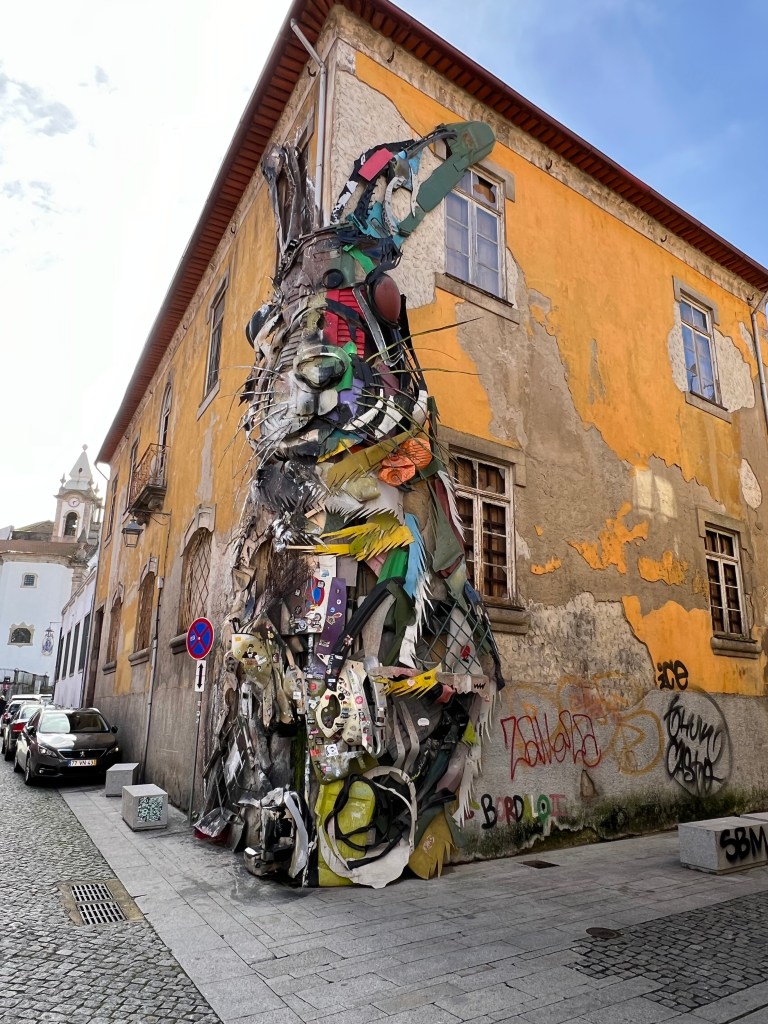
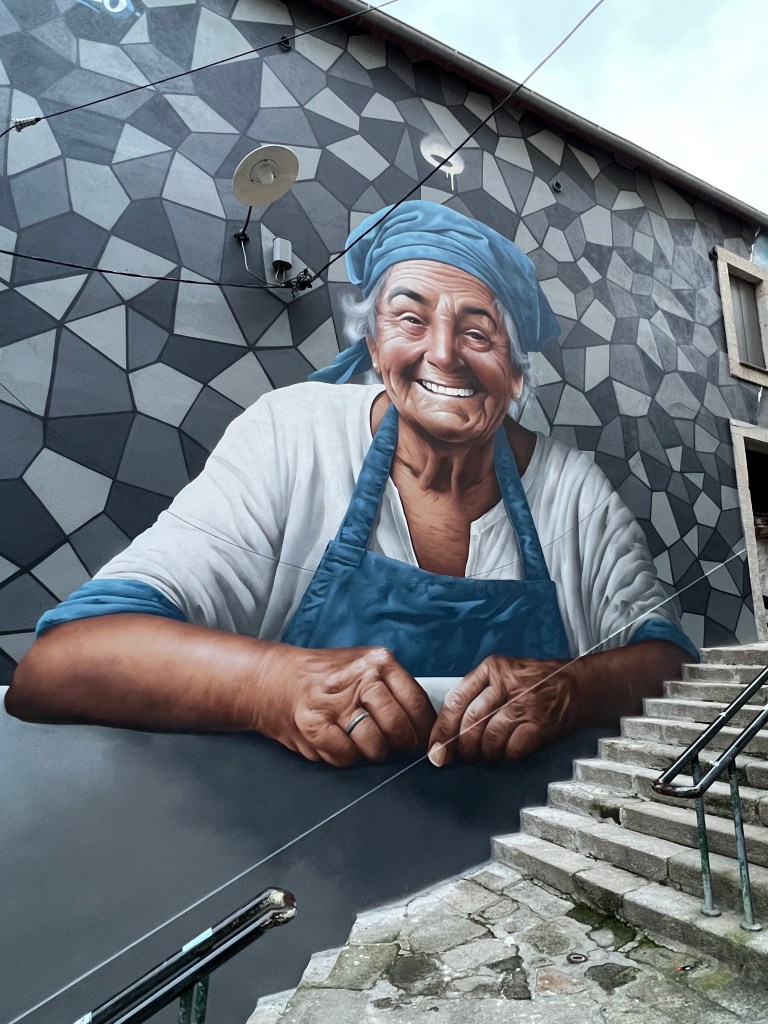


Finally, practically a mandatory thing to do while in Porto is to visit a port warehouse and do a tasting. Make sure you check online to see whether you need to reserve ahead, especially at the smaller establishments, which take fewer visitors and may close for lunch. We opted against visiting the large, more commercial British-owned Sandeman or Calem and opted instead to visit Ramos Pinto. By the time we got there on the afternoon of our last day in Porto, the only tour remaining of the warehouse was in Portuguese, but we were still able to do a tasting.

As you can see on the tasting menu, above, you choose from several options. We chose “intermediate,” and were offered five different ports, ranging from a young white to a 20 year tawny.

I liked each one a bit and could imagine myself sipping port in front of a nice, cozy fire. But I can’t say I’m a huge fan of port, overall.
Finally, I always like to visit markets while abroad, and we did poke around the Bolhao Market (on whose top floor is found the Culto do Bacalhau restaurant, where we dined New Year’s Eve). It’s important to go in the morning, as some vendors leave by the afternoon. In addition to produce, fish and meats, you’ll find Portuguese olive oil, cheeses, canned fish, chocolates and candies packaged to look like canned fish, especially the ubiquitous sardines (!), olives, and much more.

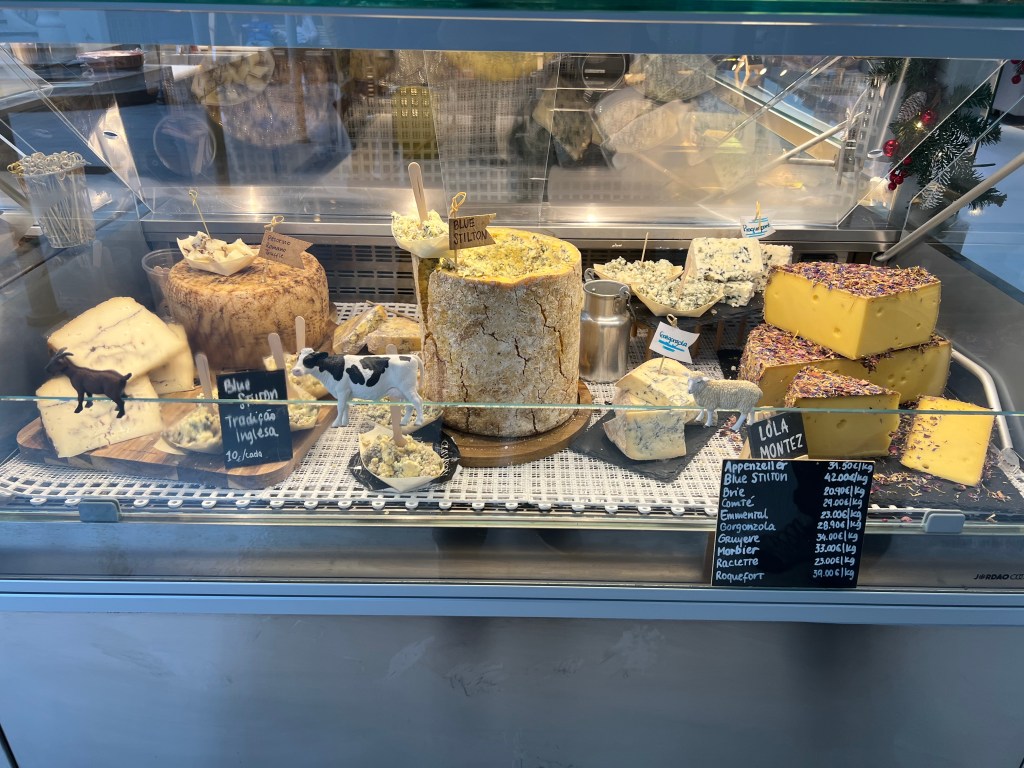



Next, it was on to Lisbon, or Lisboa, as the Portuguese call their capital city. We took a train from the azulejo-adorned Sao Bento train station, for the 3 1/2 hour ride south.
My number one tip on buying train tickets in Portugal — book ahead, online, for discounted fares, but always use the official train web site for Combos de Portugal. Just go up to the top right of the web site and click on “EN” to translate from Portuguese. It is a frustrating web site but the best way to buy tickets, rather than through a third party. Just remember that strikes on public transportation are frequent and you should sign up for email alerts of upcoming disruptions in service.

What a lovely way to spend time together with family at the New Year. We enjoyed a week in Porto just as the world was getting back to,normality after Covid. It was very quiet then and we mostly had the city to ourselves. I’d like to return sometime as it’s such a beautiful city. Great post Sandra!
LikeLike
Marion: I think it might have been your Portugal posts from a few years ago that really got me motivated to plan a trip there! Thanks so much for reading my posts. I see you made a big trip to California! Hope it was wonderful.
LikeLike
Another great report. Thank you, Sandra. Terrific photography. I felt like I was there with you.
LikeLike